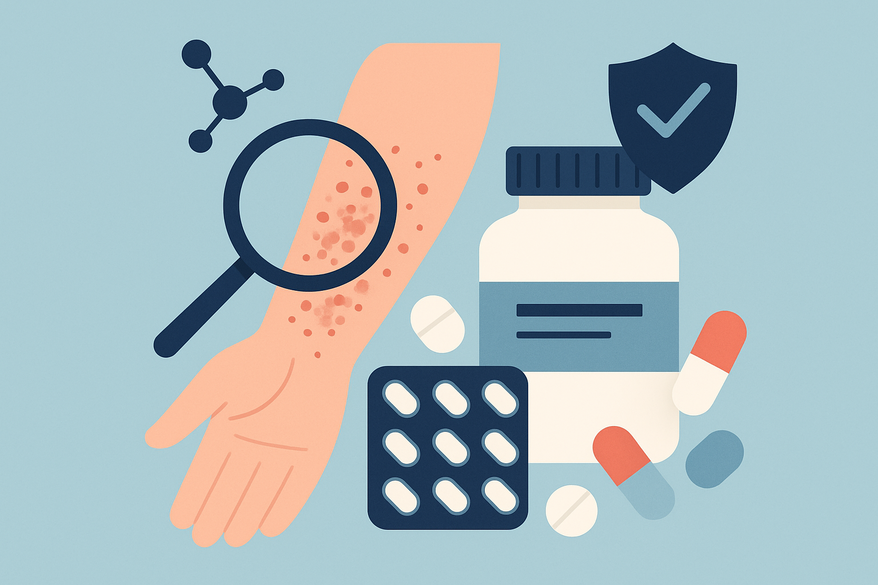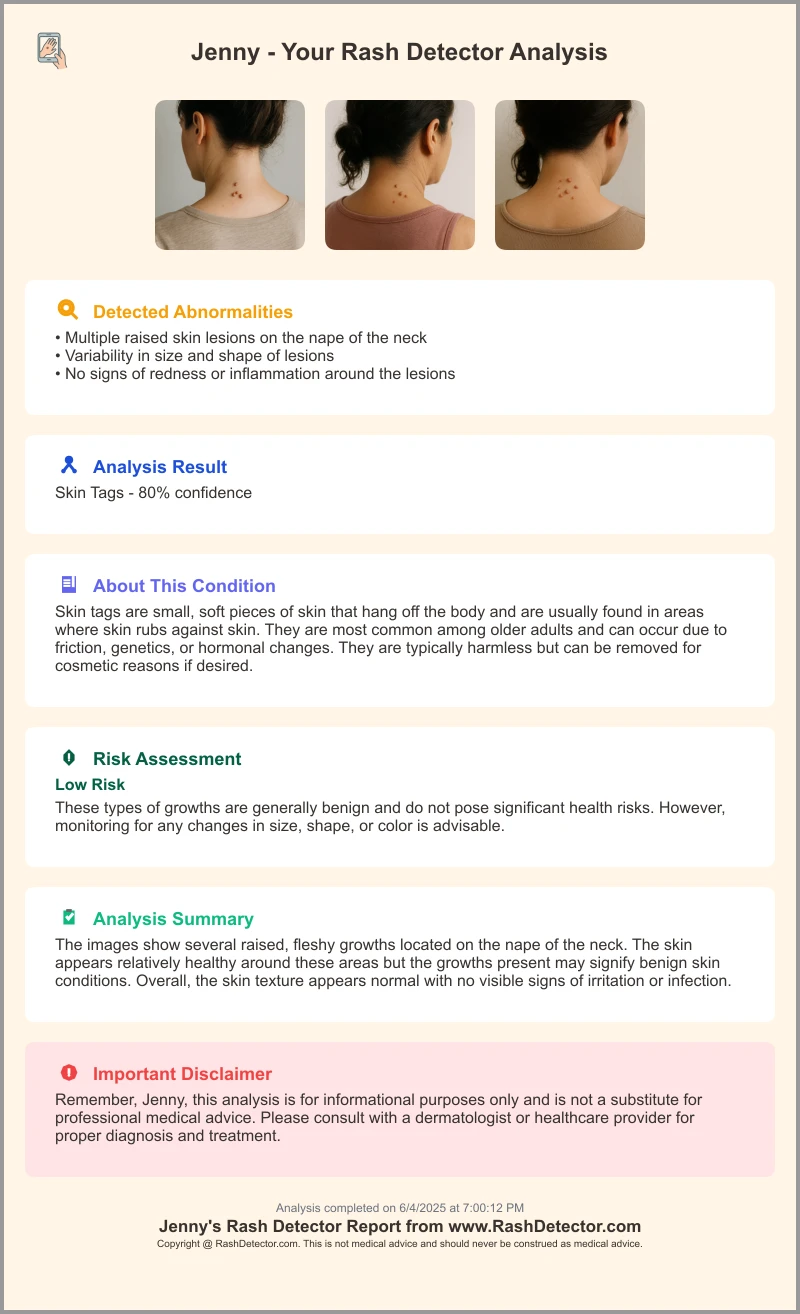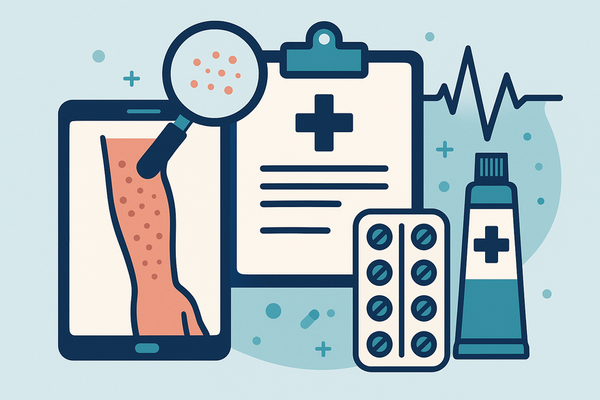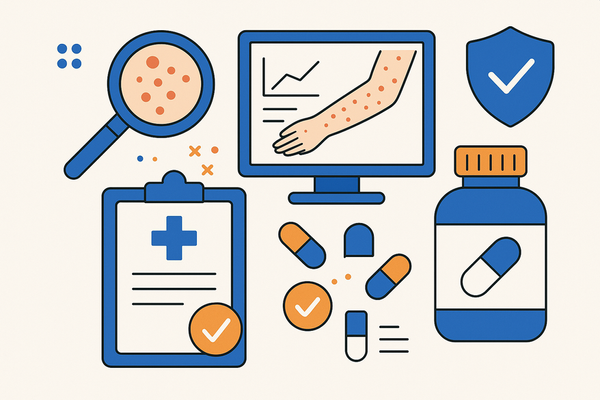Comprehensive Guide to Medication Rash Treatment
Explore effective medication rash treatment strategies. Learn to identify, manage, and prevent drug-induced skin reactions safely.

Estimated reading time: 8 minutes
Key Takeaways
- Recognize the common signs—itching, redness, bumps, hives.
- Link rash timing to new drugs or dose changes.
- Discontinue the culprit medication under medical guidance.
- Use home remedies and OTC options for mild cases.
- Seek emergency care for severe reactions or systemic symptoms.
- Maintain thorough records, communicate allergies, and wear medical ID when needed.
Table of Contents
- Introduction
- Recognizing Medication Rash Treatment Signs and Symptoms
- Causes and Contributing Factors
- Diagnosis and Identification
- Treatment Options and Strategies
- When to Seek Professional Help
- Prevention and Long-Term Management
- Conclusion and Key Takeaways
Introduction
Medication rash treatment starts with understanding that medication-induced rashes are adverse skin reactions—often allergic or hypersensitivity-mediated—to a drug. These rashes can appear as redness, bumps, hives, or blisters. Recognizing and managing these reactions early is vital. Some drug rashes are harmless, but others can signal serious conditions requiring urgent care. Proper treatment helps you stay safe and avoid complications. For more details, consult the Merck Manuals or Harvard Health.
Recognizing Medication Rash Treatment Signs and Symptoms
Knowing how to spot a drug-induced rash is the first step in effective treatment. Early detection can prevent the reaction from worsening. Common indicators include:
- Itching or burning sensation
- Red or pink patches on the skin
- Small bumps or raised welts (hives)
- Blisters or fluid-filled lesions
- Skin peeling or crusting
- Pain or tenderness in the rash area
Onset Timing
• Immediate reaction: minutes to hours after taking the drug
• Delayed reaction: days to weeks after starting treatment
Typical Distribution
• Often begins on the torso (chest, back)
• May spread to arms, legs, and face
• Can be accompanied by mouth sores, runny nose, or watery eyes
Differentiation Tips
• Link rash onset to a new drug or dose change
• Observe if rash improves when the drug is stopped
• Drug rashes differ from infection rashes (virus, bacteria) or environmental rashes (poison ivy) in timing and resolution
For an in-depth look at identifying drug-induced rash symptoms, visit the detailed guide.
Causes and Contributing Factors in Medication Rash Treatment
Understanding what triggers drug rashes helps guide prevention and management strategies.
- Common Culprit Medications
• Antibiotics: penicillins, sulfa drugs
• Anti-seizure medications: carbamazepine, lamotrigine
• NSAIDs: aspirin, ibuprofen
• Contrast dyes (for imaging)
• Diuretics (water pills) - Risk Factors
• History of drug allergies or prior rashes
• Polypharmacy (taking multiple medicines)
• Potential drug–drug interactions
• Immunocompromised states: HIV, cancer, autoimmune diseases
Diagnosis and Identification in Medication Rash Treatment
Accurate diagnosis ensures that treatment targets the right cause. Suspect a drug cause when a rash appears soon after starting a new medication or increasing a dose.
Medical Assessment Steps
1. Comprehensive Medication Review – List all prescription drugs, OTC medicines, vitamins, and herbal supplements
2. Detailed Patient History – Note prior drug reactions, allergies, and family history
3. Physical Examination – Inspect rash type, location, and spread
4. Diagnostic Tools (under specialist guidance) – Skin biopsy; Patch testing to identify contact sensitivity
Role of the Healthcare Professional
• Decides if the suspected drug should be stopped
• Orders lab tests or refers to a dermatologist/allergist
• Monitors for improvement or escalation
Treatment Options and Strategies for Medication Rash Treatment
A structured approach underpins successful relief and safety.
Core Principle
• Immediate discontinuation of the offending drug—always under medical supervision
Home and OTC Remedies for Mild Rashes
• Cool showers or compresses to soothe skin
• Soft, non-irritating clothing to reduce friction
• Calamine lotion or oatmeal baths to calm itching
• Oral antihistamines—diphenhydramine (Benadryl), loratadine (Claritin)
• Topical hydrocortisone 1% cream for mild inflammation
Prescription and Advanced Treatments
• Stronger topical corticosteroids or short-term oral steroids for persistent redness and swelling
• Emergency care for severe or systemic reactions:
– Epinephrine injection for anaphylaxis
– Hospitalization for extensive blistering or organ involvement
Combination Strategies
– Discontinue drug + Apply cool compress
– Use antihistamines + Wear breathable fabrics
– Start topical steroids + Seek follow-up care
For more on long-term management of drug allergy rashes, check managing drug allergy rash.
When to Seek Professional Help for Medication Rash Treatment
Knowing when to get urgent care can save lives and prevent lasting harm.
Urgent Warning Signs
• Difficulty breathing, wheezing, or chest tightness (anaphylaxis)
• Swelling of lips, tongue, face (angioedema)
• Severe blistering or peeling of skin
• Signs of infection: increased pain, warmth, pus, red streaks
• Systemic symptoms: fever above 100.4°F, confusion, rapid heartbeat
Non-Urgent but Concerning
• Rash that does not improve in 48–72 hours
• New symptoms like joint pain or swollen glands
Practical Tips
• Photograph rash at regular intervals to track changes
• Keep a detailed log of all medications and doses
• Note timing of food, supplements, and symptom onset
Prevention and Long-Term Management of Medication Rash Treatment
Long-term success relies on vigilance and clear communication.
- Before Starting New Medications
• Inform providers of all known drug allergies and past rashes
• Discuss family history of drug reactions - Record Keeping
• Maintain an up-to-date list of prescriptions, OTCs, and supplements
• Include reaction details: date, drug name, symptoms - Wear Medical Alert ID
• Bracelet or necklace noting severe drug allergies - Avoid Self-Medication
• Do not start or stop drugs without consulting your healthcare team - Regular Reviews
• Schedule periodic check-ups with a dermatologist or allergist for chronic or recurrent rashes
In addition to these strategies, you can leverage advanced tools like the Skin Analysis App for quick AI-driven analysis and personalized guidance.

Conclusion and Key Takeaways on Medication Rash Treatment
Effective treatment hinges on prompt recognition, safe drug discontinuation, symptom relief, and timely medical intervention. By following these best practices, you can minimize risks and manage skin reactions effectively. Continuous patient-provider communication and vigilant monitoring are your strongest tools in staying safe from drug-induced rashes.
FAQ
- What are the first signs of a medication-induced rash?
Itching, redness, bumps, or hives appearing minutes to days after starting a new drug. - How soon should I stop the suspected medication?
Under medical guidance, discontinue at the first sign of an adverse rash—especially if discomfort is significant. - Can I treat a mild drug rash at home?
Yes. Use cool compresses, calamine lotion, oatmeal baths, and OTC antihistamines or low-strength hydrocortisone. - When is it critical to seek emergency care?
Difficulty breathing, swelling of the face or throat, extensive blistering, systemic symptoms like high fever or rapid heartbeat. - How can I prevent future drug rashes?
Keep detailed allergy records, inform all healthcare providers of past reactions, and wear a medical alert ID when necessary.





